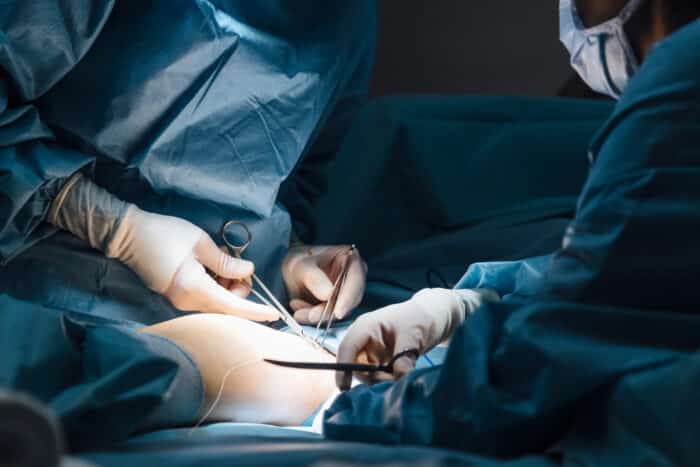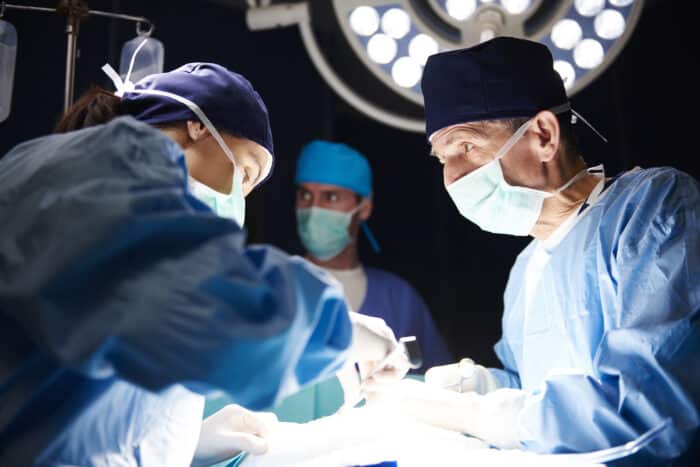If you aspire to a healthcare career and that too within the surgical squad, then you may also opt for a career as a Sterile Processing Tech.
They are the professionals who focus on maintaining the hygiene of medical equipment, thereby ensuring their safety for patient use.
If this intrigues you, in this article, we’ll be discussing about the Sterile Processing Tech, their duties, education, certification, salary, and job outlook, their difference with Surgical Techs, and much more.
So, stay tuned –
What is a Sterile Processing Technician?
A Sterile Processing Technician is also often referred to as a Sterile Processing and Distribution Technician (SPD Tech), Medical Equipment Preparers, or Central Service Technician (CRCST).
They are the professionals responsible for ensuring that the medical instruments and equipment are properly cleaned, sterilized, and prepared for use in various medical procedures, including surgeries.
Their work directly impacts patient safety by preventing infections and showcases the dedication of healthcare facilities to adhere to strict sanitation and sterilization standards.
What do they do?
Sterile Processing Technicians have an array of important duties –
Instrument Cleaning
SPD Techs are the first line of defense when it comes to ensuring that surgical instruments, medical devices, and equipment are free from contaminants. They meticulously clean these items, disassembling them when necessary, and removing any debris or contaminants.
Sterilization Experts
After the initial cleaning, they ensure that the instruments and equipment are sterile and safe for patient use. This is achieved through the use of sterilization equipment, such as autoclaves, which employ high-temperature steam and other methods to eliminate any remaining microorganisms.
Equipment Inspection
They play a crucial role in maintaining the functionality and safety of instruments and equipment. They thoroughly inspect these items for defects, wear, and damage. Any instruments found to be damaged are either repaired or replaced to maintain the highest quality standards.
Inventory Management
These professionals are responsible for maintaining meticulous records of all instruments and equipment. They must ensure that everything is properly organized and available when needed, guaranteeing seamless surgical procedures.
Education
To become a Sterile Processing Technician, you typically require a high school diploma or equivalent. However, some employers may prefer candidates with a formal Sterile Processing Technician training program.
These programs, often offered by vocational schools or community colleges, provide a comprehensive understanding of the role, including infection control, sterilization techniques, and regulatory guidelines.
On-the-job training is also common for entry-level positions in this field. So, while choosing the program ensure that they offer externships opportunity. Or simply, choose online programs.
Earning Potential and Job Outlook
As per BLS 2022 data, the annual average salary of a Sterile Processing Technician is $44,940 and the average hourly rate is $21.61.
However, the top 10% earn more than $62,960 annually, depending on factors like location, experience, and the specific healthcare facility.
As per Zippia, the projected employment change for Sterile Processing Technicians from 2018 to 2028 is 8%, which is excellent. They also state that there are over 49,205 active sterile processing technicians.
Certification
Like with Surgical Techs, certification is not always mandatory, but many Sterile Processing Technicians choose to become certified since it can enhance job prospects and lead to higher earning potential.
You can either get certified as a Certified Registered Central Service Technician (CRCST) through the International Association of Healthcare Central Service Material Management (IAHCSMM) or Certified Sterile Processing and Distribution Technician (CSPDT) through the Certification Board for Sterile Processing and Distribution, Inc. (CBSPD).
How to Become a Sterile Processing Technician?
You now know all the aspects, let’s understand how can you become one. Sterile Processing technicians are the professionals who play a crucial role in maintaining patient safety through the proper sterilization and handling of medical instruments and equipment.
Here’s a step-by-step guide on how to become a Sterile Processing Technician –
Step 1 – High School Diploma or Equivalent
The first step is to ensure you have a high school diploma or an equivalent qualification. This is typically the minimum educational requirement for entry-level positions in this field.
Read More:
-> Online Surgical Tech Programs
-> Surgical Tech Classes & Courses
-> Surgical Tech Program & Training
Step 2 – Education and Training
Now you should enroll in a formal Sterile Processing Technician training program. These programs are offered by vocational schools, community colleges, or online institutions.
They provide a comprehensive understanding of the role, including infection control, sterilization techniques, and regulatory guidelines.
Step 3 – On-the-Job Training
After completing your formal education, you should start your career with on-the-job training. During this period, you will work under the guidance of experienced technicians to gain practical experience and familiarize yourself with the equipment and processes used in healthcare facilities.
Also Read:
Step 4 – Consider Certification
While certification is not always required, many employers prefer or even require Certified Sterile Processing Technicians. Two widely recognized certifications are available –
Certified Registered Central Service Technician (CRCST): This certification is offered by the International Association of Healthcare Central Service Material Management (IAHCSMM).
Certified Sterile Processing and Distribution Technician (CSPDT): This certification is provided by the Certification Board for Sterile Processing and Distribution, Inc. (CBSPD).
Pursuing certification can enhance your job prospects and potentially lead to higher earning potential.
Step 5 – Apply for Positions
With your education, training, and possibly certification, you’re ready to start applying for Sterile Processing Technician positions.
Look for job openings at hospitals, surgical centers, clinics, and other healthcare facilities. Create a professional resume highlighting your education, training, and any certifications.
Step 6 – Continuing Education
Once you secure a position as a Sterile Processing Technician, consider continuing education. The field of healthcare is dynamic, and staying updated on best practices, new sterilization techniques, and regulatory changes is essential for your career growth.
As you gain experience and expertise, there may be opportunities for career advancement. You could move into roles with more responsibilities, such as Sterile Processing Supervisor or Manager, or even transition into related healthcare fields.
Read More:
-> What Does a Surgical Tech Do?
-> How to Become a Surgical Tech?
Sterile Processing Technician vs Surgical Technologist
The healthcare industry relies on a variety of professionals to ensure the safety and efficiency of medical procedures. Two key roles in this context are Sterile Processing Technicians and Surgical Technologists.
While they share some similarities, these roles have distinct responsibilities and functions. Here are the distinctions between the two roles –
Education
Sterile Processing Technicians typically require a high school diploma or equivalent. They often complete formal Sterile Processing Technician training programs, which can last several months.
Becoming a Surgical Technologist requires completing a post-secondary program, such as an associate degree or a diploma in surgical technology. These programs include both classroom and clinical training.
Certification
While not always required, Sterile Processing Technicians can get certified as a Certified Registered Central Service Technician (CRCST) or a Certified Sterile Processing and Distribution Technician (CSPDT) is available.
For Surgical Technologists, many employers prefer Certified Surgical Technologists (CST), which can be obtained by passing an exam offered by the NBSTSA or NCST.
You May Also Like:
-> Surgical Tech Certification
-> How to Become a Certified Surgical Tech?
-> Can You Be a Surgical Tech Without Certification?
Role and Responsibilities
Sterile Processing Technicians are responsible for ensuring surgical instruments and medical equipment are properly sterilized and ready for use. They work behind the scenes to maintain the cleanliness and sterility of healthcare equipment.
Surgical Technologists play a hands-on role in the operating room, assisting surgeons and the surgical team during procedures. They ensure the surgical environment is prepared, instruments are ready, and the patient is safe and comfortable.
Scope of Practice
The Surgical Technologist’s primary focus is on providing support to the surgical team. They do not perform surgical procedures or make incisions.
Sterile Processing Technicians have a broader scope of practice. They sterilize surgical instruments and equipment using various techniques and equipment like autoclaves. Besides that, they conduct inventory management, maintain quality control, and distribute cleaned and sterilized equipment to various departments including operating rooms.
Earning Potential
As per BLS, Surgical Technologists earn around $55,960 on average yearly, with an hourly rate of around $27.
While the annual average salary of a Sterile Processing Technician is $44,940, and the average hourly rate is $21.61.
Read:
Job Outlook
According to the BLS, Surgical Technologists could see a job growth of 5% in this decade.
As per Zippia, the projected employment change for Sterile Processing Technicians from 2018 to 2028 is 8%, which is excellent.
In Conclusion
Becoming a Sterile Processing Technician or a Surgical Technologist is a fulfilling career path that allows you to contribute to patient safety.
They are the unsung heroes working behind the scenes to safeguard patients and maintain the highest standards of surgical procedures and sterilization in healthcare facilities.
Ultimately, both roles are vital to the healthcare system, each with its unique responsibilities and educational requirements.
Related:
-> CVOR Tech
-> Scrub Nurse vs Surgical Tech
-> Challenges of Surgical Tech School
-> Surgical Tech vs Surgical Assistant
Related Articles
-
How to Be Successful in College in 2022 – 7 Simple Tips to Succeed
-
How Do Scholarships Work? Read This First…Truth is Shocking
-
7 Best College Majors 2024: What Should I Major In?
-
How to Choose a College – 10 Things You Must Consider in 2024
-
Why Go to College? Top 13 Benefits for Adult Students in 2022
-
Top 5 Best Alternatives to Community College for 2024








